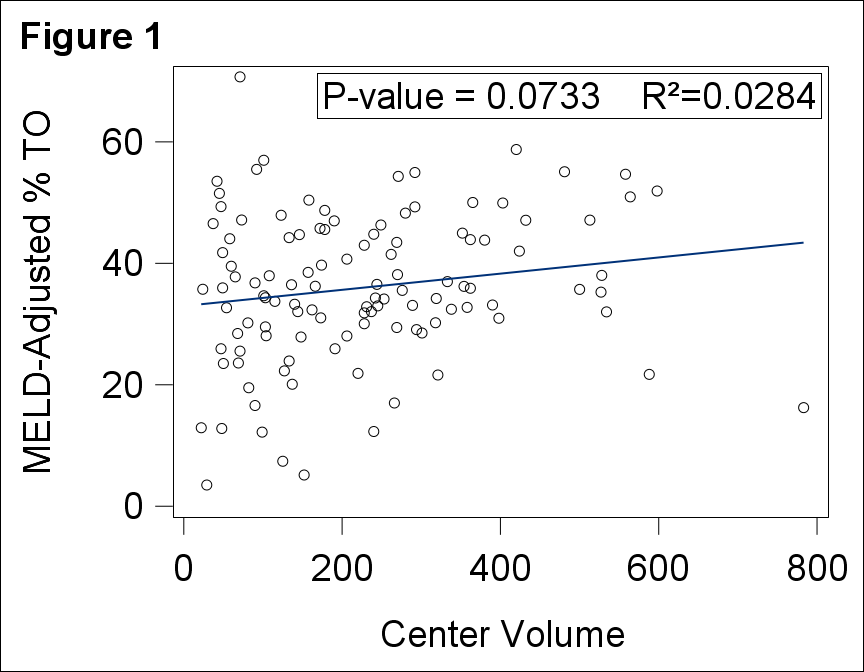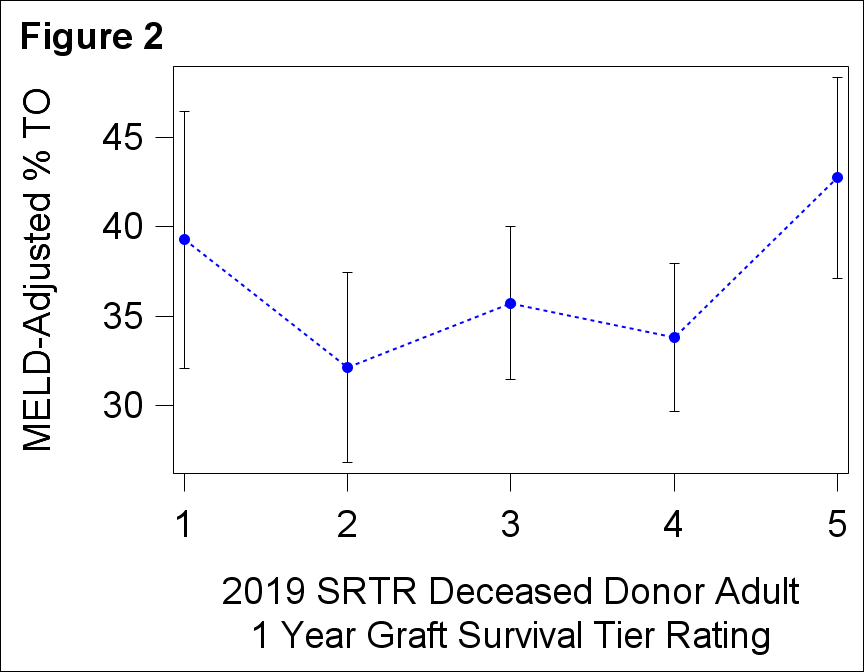Impact of Center Volume and MELD on Textbook Outcome Rates in Liver Transplantation
Department of Surgery, Division of Transplantation, The Ohio State University Wexner Medical Center, Columbus, OH
Meeting: 2020 American Transplant Congress
Abstract number: 387
Keywords: Length of stay, Liver transplantation, Outcome, Post-operative complications
Session Information
Session Name: Quality Assurance Process Improvement & Regulatory Issues II
Session Type: Oral Abstract Session
Date: Saturday, May 30, 2020
Session Time: 3:15pm-4:45pm
 Presentation Time: 4:03pm-4:15pm
Presentation Time: 4:03pm-4:15pm
Location: Virtual
*Purpose: Textbook outcome (TO) is a composite quality metric used in liver transplantation (LT) and defined as patient and graft survival > 1 year, length of stay ≤ 10 days, 0 readmissions within 6 months, absence of rejection, and bilirubin < 3 between months 2-12 post-LT. The 2013 - 2017 averaged national TO rate was 37.4%. This study examines the relationship between center-level TO rate, center volume, center median MELD at transplant, and compares MELD-adjusted center-level TO rates with current SRTR quality metrics.
*Methods: Center-level TO rates were calculated using national UNOS STAR file data for 25,887 adult LT recipients transplanted between 2013 and 2017. Linear regression was used to model the relationships between center TO rate, volume, and median-MELD at transplant. Residuals from the MELD-regression model were used to calculate MELD-adjusted center TO rates and these were compared with current SRTR tier ratings.
*Results: Center TO rates declined with increasing median MELD at transplant (p < 0.0001) and all further analyses used MELD-adjusted center TO rates. Both low and high volume centers were able to exceed the national average TO rate of 37.4% (Figure 1) and there was a mild trend toward increased TO rates at higher volume centers. MELD-adjusted center TO rates did not correlate well with SRTR tier ratings for adult deceased donor one year graft survival (Figure 2).
*Conclusions: The composite quality metric of TO after LT incorporates patient-centric holistic outcome measures related to graft function and efficient resource utilization and is an important adjunct to current quality metrics. Center-level comparisons of TO rate require MELD adjustment and highlight that center volume is not the sole determinant of quality.
To cite this abstract in AMA style:
Schenk AD, Han JL, Logan AJ, Sneddon JM, Brock GL, Washburn WK. Impact of Center Volume and MELD on Textbook Outcome Rates in Liver Transplantation [abstract]. Am J Transplant. 2020; 20 (suppl 3). https://atcmeetingabstracts.com/abstract/impact-of-center-volume-and-meld-on-textbook-outcome-rates-in-liver-transplantation/. Accessed December 14, 2025.« Back to 2020 American Transplant Congress


